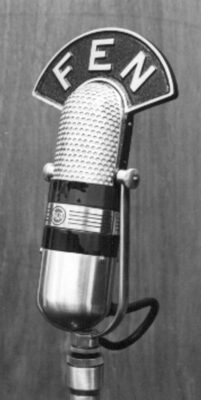The Day the Music Died

We let Tom “Big Smoke” Duvall tell his story about how the Occupation of Japan unfolded at the beginning. That is part of the tale unfolding about the emergence of a new branch of government here in the United States. That would be the Deep State we hear about frequently these days. There is some uncertainty about how it came about, and we thought it worth a little examination.
There were a lot of things that lingered into the 1970s and 80s from the era after the dropping of the Bombs that ended a global structure. Korea and Vietnam notwithstanding, our personal votes for one of the tipping points of Big Smoke’s then-and-now goes to Super Typhoon Tip in 1979, when some of us were assigned to USS Midway. It is not part of the story of an array of media and government agencies that now perform functions not imagined in our found documents.
Back then, we were ground-pounders in the ranks of Airwing FIVE, assigned to our part of a permanently deployed group of Americans in Japan. We were neither fish nor fowl. We were not essential to flight operations while ‘on the beach,’ and not exactly ship’s company.
It was an arrangement that permitted all sorts of mischief when there was nothing going on. Part of that meant that we were confined to bunkrooms and steel racks on our ship even when in port. Something unexpected occurred one storm season. A great storm was rising that had nothing to do with human affairs. They call them “Typhoons.”
Our response to the rising winds was to scatter our jets to places of safety and put the ship to sea to avoid being battered at the pier.
That particular storm was considered at the time to be the most intense and largest tropical cyclone ever to form, more intense even than Typhoon Cobra, the 1944 storm described in “The Caine Mutiny” that sank three destroyers of VADM “Bull” Halsey’s Task Force 38.
The Bull later said the storm was as hard on his task force as a heavy engagement with the enemy, and the ships that survived reported taking 70-degree rolls.
Think about that for a moment, would you? The ships that did not tip all the way to 90 degrees, and ultimately beyond that, were right-angled to the towering angry swells. Raw raging saltwater cascaded down into the stacks and flooded the engine rooms and the lean gray ships foundered, and just kept rolling.
We had no particular fear of anything like Cobra striking us, though of course in retrospect, the awesome force of nature has an inevitability that is perfectly obvious.
We had better warning than the real Old Salts. ‘Tip’ formed in the northwestern Pacific in early October as a tropical depression and over the next week intensified to tropical storm and finally typhoon strength. On the 11th, its pressure dropped 98 millibars, from 996 to 898, and became Super Typhoon Kip. Circulation reached a record-setting diameter of 1,350 miles with gale-force winds extending fully 675 miles from the eye.
We were sitting in Yokosuka as the storm grew and were joined by a new escort ship- USS Bainbridge, a nuclear cruiser. The intent had been to ride out the storm in the protected waters of the Sagami Wan, but either the magnitude of the storm, or the fact that word began to get around that a nuclear warship was in port, caused us to sortie into the weather.
It was the first time we had seen plates move by themselves across the wardroom tables, and sheets of green water rise above the bow of an aircraft carrier. The heavy seas carried away the whisker antenna along the catwalks, and Bunkroom 4, located as it was on the level below the flight deck way forward, actually made us experience a weightless moment at the top of the arc-of-movement.
On the 12th, Super Typhoon Tip generated 190 mph winds off the lowest barometric pressure ever recorded for an atropical cyclone at 870 millibars.
The massive storm weakened as it headed toward Japan, and we escaped the winds and seas on the dash for the safety of the Philippines. When the storm came ashore, it caused significant damage to the agricultural and fishing industries and killed sixty-eight people.
The storm killed something else, too, and it was something that had been in place since 1945. The primary transmitting tower of the Far East Network (FEN) was at Camp Drake, near Tokyo. It broadcast 10,000 watts of rock and roll on AM 810, and carried language lessons and all sorts of the daily Americana to keep the troops from getting homesick.
Typhoon Tip knocked down the transmitting tower, and that was the end of broadcasting America to the Japanese. There after, only low-power broadcasts were permitted, and television went to cable, only to be seen on the bases, or by direct satellite delivery.
Tip was in fact the tipping point of something, and never again did we encounter a Japanese person who would ask, in decent American English, what we thought about Casey Kassem’s American Top Forty Count Down.
That was 1979, October 12th, the Day the Music Died. We will get back to the other storm tomorrow!
Copyright 2023 Vic Socotra
www.vicsocotra.com
